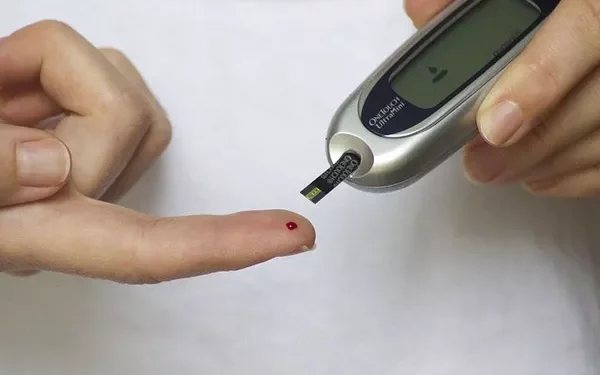Normal Blood Glucose Levels
Normal blood glucose levels can vary slightly depending on factors such as age, overall health, and the presence of other medical conditions. Generally, normal blood glucose levels are defined as follows:
Fasting Blood Glucose: This is the level of glucose in the blood after an overnight fast (typically 8 hours without eating). For non-diabetic individuals, normal fasting blood glucose levels are between 70 and 99 mg/dL (3.9 to 5.5 mmol/L). For diabetics, a target fasting blood glucose level is typically between 80 and 130 mg/dL (4.4 to 7.2 mmol/L).
Postprandial Blood Glucose: This is the level of glucose in the blood 1-2 hours after eating. For non-diabetic individuals, normal postprandial blood glucose levels are less than 140 mg/dL (7.8 mmol/L). For diabetics, the target postprandial blood glucose level is typically less than 180 mg/dL (10.0 mmol/L).
HbA1c (Glycated Hemoglobin): This is a measure of the average blood glucose levels over the past 2-3 months. For non-diabetic individuals, a normal HbA1c level is less than 5.7%. For diabetics, the target HbA1c level is typically less than 7%, though individual targets may vary based on personal health goals and circumstances.
Factors Influencing Blood Glucose Levels
Several factors can influence blood glucose levels, making it important for diabetics to understand and manage these variables effectively. Key factors include:
Diet: Carbohydrates have the most significant impact on blood glucose levels. Understanding how different types of carbohydrates affect blood glucose and managing carbohydrate intake is essential.
Physical Activity: Exercise can lower blood glucose levels by increasing insulin sensitivity and promoting glucose uptake by the muscles. However, the timing, intensity, and duration of exercise can influence blood glucose levels differently.
Medications: Insulin and other diabetes medications play a crucial role in managing blood glucose levels. Adhering to prescribed medication regimens and understanding how medications affect blood glucose is vital.
Stress: Physical and emotional stress can affect blood glucose levels by triggering the release of stress hormones, which can increase blood glucose.
Illness: Acute illnesses, such as infections, can cause blood glucose levels to fluctuate, making it important to monitor and adjust diabetes management strategies during such times.
Importance of Regular Blood Glucose Monitoring
Regular blood glucose monitoring helps diabetics understand how their lifestyle choices and treatment plans affect their blood glucose levels. It provides valuable information that can guide adjustments in diet, exercise, and medication. There are various methods of blood glucose monitoring, including:
Self-Monitoring of Blood Glucose (SMBG): Using a blood glucose meter, diabetics can check their blood glucose levels at home. This method provides immediate feedback and helps in making day-to-day management decisions.
Continuous Glucose Monitoring (CGM): CGM systems use a sensor placed under the skin to measure glucose levels continuously throughout the day and night. This method provides a comprehensive view of blood glucose trends and can help in identifying patterns and making informed adjustments.
HbA1c Testing: This lab test measures average blood glucose levels over the past 2-3 months. It is typically done every 3-6 months and helps in assessing long-term blood glucose control.
Target Blood Glucose Levels for Different Populations
While general target blood glucose levels provide a useful framework, individual targets may vary based on specific health needs and circumstances. Different populations may have different target levels, including:
Children and Adolescents: Managing diabetes in children and adolescents requires consideration of growth, development, and lifestyle. Target blood glucose levels may be slightly higher to avoid hypoglycemia and support growth.
Pregnant Women: Pregnancy can affect blood glucose levels, and managing gestational diabetes requires specific targets to ensure the health of both the mother and the baby. Typical targets include fasting blood glucose levels below 95 mg/dL (5.3 mmol/L) and postprandial levels below 140 mg/dL (7.8 mmol/L) one hour after eating.
Older Adults: Older adults may have different health priorities and risks, such as a higher risk of hypoglycemia and other comorbidities. Individualized targets that balance glycemic control with overall health and quality of life are important.
Individuals with Comorbid Conditions: For those with additional health conditions, such as cardiovascular disease, kidney disease, or neuropathy, blood glucose targets may be adjusted to accommodate the complexity of managing multiple conditions.
Strategies for Achieving and Maintaining Target Blood Glucose Levels
Achieving and maintaining target blood glucose levels requires a comprehensive approach that includes lifestyle modifications, medication management, and regular monitoring. Key strategies include:
Healthy Eating: Following a balanced diet that includes a variety of nutrient-dense foods can help in managing blood glucose levels. Emphasizing whole grains, lean proteins, healthy fats, and plenty of fruits and vegetables is beneficial.
Physical Activity: Regular exercise can improve insulin sensitivity and help in maintaining target blood glucose levels. Aim for at least 150 minutes of moderate-intensity aerobic activity per week, along with strength training exercises.
Medication Adherence: Taking medications as prescribed and understanding their effects on blood glucose levels is crucial. Regular communication with healthcare providers can help in making necessary adjustments.
Stress Management: Practicing stress-reducing techniques, such as mindfulness, yoga, or deep breathing exercises, can help in managing blood glucose levels.
Routine Monitoring: Regularly checking blood glucose levels and keeping track of the results can provide valuable insights into how different factors affect blood glucose. Using these insights to make informed decisions can help in maintaining target levels.
Addressing Hypoglycemia and Hyperglycemia
Both hypoglycemia (low blood glucose) and hyperglycemia (high blood glucose) can pose significant risks for diabetics. Understanding the symptoms, causes, and management strategies for these conditions is essential:
Hypoglycemia:
Symptoms: Shakiness, sweating, confusion, dizziness, and irritability.
Causes: Skipping meals, excessive insulin or medication, intense physical activity, and alcohol consumption.
Management: Consuming fast-acting carbohydrates, such as glucose tablets, fruit juice, or candy, can quickly raise blood glucose levels. Monitoring and adjusting treatment plans as needed is important to prevent future episodes.
Hyperglycemia:
Symptoms: Increased thirst, frequent urination, fatigue, blurred vision, and headaches.
Causes: Overeating, insufficient insulin or medication, illness, and stress.
Management: Adjusting insulin or medication doses, staying hydrated, and engaging in physical activity can help lower blood glucose levels. Monitoring and seeking medical advice if hyperglycemia persists is important to prevent complications.
The Role of Healthcare Providers
Collaborating with healthcare providers is vital for effective diabetes management. Regular check-ups, including HbA1c testing, can help in assessing long-term blood glucose control and making necessary adjustments to treatment plans. Healthcare providers can offer valuable guidance on:
Individualized Targets: Setting realistic and personalized blood glucose targets based on individual health needs and circumstances.
Medication Management: Prescribing appropriate medications and providing education on how to use them effectively.
Lifestyle Recommendations: Offering advice on diet, exercise, and stress management to support overall health and glycemic control.
Monitoring and Adjustments: Helping in interpreting blood glucose data and making necessary adjustments to treatment plans.
See also: Why Is Libre Reading Higher Than Finger Stick?
Conclusion
Understanding and maintaining a normal diabetes rate is crucial for managing diabetes and preventing complications. By focusing on target blood glucose levels, regular monitoring, and a comprehensive approach to lifestyle and medication management, individuals with diabetes can achieve optimal health outcomes. Collaborating with healthcare providers and staying informed about the factors that influence blood glucose levels can further enhance diabetes management and improve quality of life.
Related topics:
What’s the Newest Glucose Meter

























